Books: Art, archaeology, and inspiration: long-lost Buddhist art comes to light
Cave Temples of Mogao
Art and History on the Silk Road
Roderick Whitfield, Susan Whitfield, Neville Agnew
Photography: Lois Conner and Wu Jian
The Getty Conservation Institute and the J. Paul Getty Museum:
Los Angeles, 2000
144 pp.; $29.95
The Dalai Lama’s Secret Temple
Tantric Wall Paintings from Tibet
Ian A. Baker
Photography: Thomas Laird
Thames and Hudson:
New York, 2000
216 pp.; $65.00
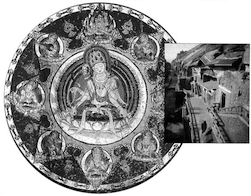
The Mogao cave temples are one of the most significant sites of Buddhist art in the world. Founded in the fourth century as an isolated monastery, Mogao is home to some five hundred caves carved into rock cliffs. These caves contain miles of wall paintings, thousands of statues, tens of thousands of ancient manuscripts, and additional work on silk and paper.
Located in a remote area of China near Dunhuang and the Gobi desert, Mogao lies on the famous Silk Road, the ancient trading route linking China with the West. It is believed that the cave temples were built to provide a site for prayer and rest before or after the treacherous journey across the Gobi desert.
When the Silk Road was abandoned under the Ming dynasty, Dunhuang was left desolate and Mogao was virtually forgotten, a victim of the elements, Islamic invaders, and random acts of looting. It wasn’t until 1900 that the discovery of the so-called “Library Cave,” with its remarkable trove of manuscripts—including copies of sutras, poems, prayer sheets, and official documents—spurred interest in the site. So much interest, in fact, that by the end of the 1920s the Chinese government had placed a strict mandate against any further exploration of Mogao for fear of losing any more of its precious artifacts.
What survived both the elements and Western archaeologists, as Cave Temples of Mogao shows, is still quite impressive. Each page presents colorful and eye-catching photographs of the Buddhas and bodhisattvas who populate the interiors of the caves, while time lines and clear historical narrative convey the vastness of Mogao’s sixteen centuries of history.
The Dalai Lama’s Secret Temple presents for the first time over 150 photographs of what author Ian Baker describes as the “Buddhist Sistine Chapel.” Located on an island in a pond behind the Potala Palace, the Lukhang temple is little known, even among Tibetans. Constructed as a place of retreat for the Dalai Lamas, Lukhang takes its name from the lu, or nagas, serpent-like deities said to inhabit the lake. At the end of the seventeenth century its interior was extensively painted by unknown artists intending to create an atmosphere guiding the Dalai Lamas in Dzogchen and Tantric contemplation. The current Dalai Lama never entered the Lukhang, having fled Tibet before his tutors introduced him to the temple. The Dalai Lama’s Secret Temple offers the reader a glimpse of these formerly private works of art. Some of the depicitions in the Lukhang murals are fantastical, bewildering, and even grotesque. As H. H. the Dalai Lama explains in the introduction to the book, “Originally the Tantric practices illustrated by these murals were revealed only after years of study and meditation under a qualified teacher.”
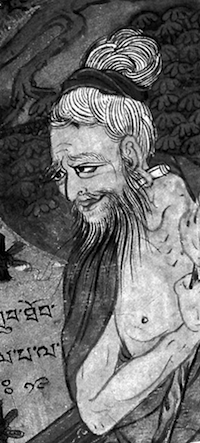
Poetry: Selections from Buddhist poetry books published this year:
Songs of Spiritual Experience
Tibetan Buddhist Poems of Insight and Awakening
Selected and translated by Thupten Jinpa and Jas’ Elsner
Shambhala Publications: Boston,2000
240 pp.; $25.00 (hardcover)
From A Spring Day by Kelsang Gyatso, seventh Dalai Lama
On the eighth day of a spring month, in a time called the white year,
I tried to hold my mind and make it
still—
my mind that wanders aimlessly.
Repeatedly I tried, ever more dejectedly.
I wished to merge my mind
in the sky of unstained space;
I wished to float my body
lightly, in dancing clouds.
Like a breeze in the open air,
my mind yearns to drift, ill at ease
in rest.
Yet now, before the sun turns red
and sets,
may I leave this place, this gaping
state—
a field of lotus groves, spacious,
blissful,
a mind at ease and joyful.
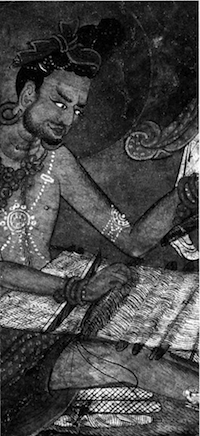
Triumph of the Sparrow
Zen Poems of Shinkichi Takahashi
Translated by Lucien Stryk
Grove Press: New York, 2000
170 pp.; $13.00 (cloth)
Wind Among the Pines
The wind blows hard among the pines
Toward the beginning
Of an endless past.
Listen: you’ve heard everything.
A Quiet Room
The Poetry of Zen Master Jakushitsu
Translated by Arthur Braverman
Tuttle Publishing: Vermont, 2000
101 pp.; $14.95 (cloth)
Sitting in the Mountains
Rock slab seat
legs folded
sitting alone
Not loathing noise
not savoring silence
The carefree clouds concur

Hermit of Go Cliffs
Timeless Instruction from a Tibetan Mystic
Translated by Cyrus Stearns
Wisdom Publications: Boston, 2000
209 pp.; $19.95 (cloth)
Namo Guru
Body impermanent like spring mist;
mind insubstantial like empty sky;
thoughts unestablished like breezes in space.
Think about these three points over and over.
Desiring to part from
the bitterness in the world,
I seek one word
from the Master.
When I Find You Again,
It Will Be In Mountains
The Selected Poems of Chia Tao
Translated by Mike O’Connor
Wisdom Publications: Boston, 2000
160 pp.; $15.95 (cloth)
At the Retreat of Monk Chu-Ku
The path to the meditation hall
is steep and perilous;
I look back to view
the upper watershed.
A woodcutter’s trail links
all the peaks;
a boulder-choked creek
flows through bamboo.
One Sound
Traditional Buddhist Music from Tibet, China, Vietnam, Korea, Sri Lanka and Japan
Paul Morris, editor
Ellipsis Arts: Roslyn, 2000
CD and Booklet
Among the many forms in which human spirit has tried to express its innermost yearnings and perceptions, music is perhaps the most universal. It symbolizes the yearnings for harmony, within oneself and with others; with nature and with the spiritual and the sacred within us and around us. There is something in music that transcends and unites. This is evident in the sacred music of every community.
-H.H. the Dalai Lama, Message for the World Festival of Sacred Music, September 4, 1998
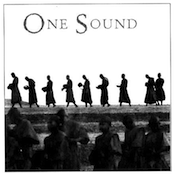
Zen teacher Joan Halifax Roshi introduces this compilation by encouraging us to listen to these recordings with “judgment suspended, with ‘beginner’s ears.”‘ This compilation provides an overview of the different sounds that accompany various Buddhist traditions. Selections include Thich Nhat Hanh chanting a prelude to sitting meditation, sutra chanting by Sri Lankan monks, the congregation of the Ch’an meditation center in New York chanting “The Four Great Vows/The Three Refuges,” and the Japanese Shakuhachi flute.
Anyone who has sought out Buddhist-inspired music will know how hard it is to find quality recordings. Often, traditional compositions are overwhelmed with “new-agey” keyboards and synthesized strings—but such is not the case here. With regard to “authenticity,” the compilers have set out to show that this music is one and the same with the dharma. Halifax Roshi explains, “You will discover the rare and treasured teachings of the Budd ha through what you are hearing.” Whether it be the expansiveness of the Ch’an Meditation Center chorus, the closeness of Thich Nhat Hanh’s voice, or the subtle vibrations of the bells heard in the Korean “Morning Bell Chant,” this record’s performances have been captured cleanly and expressively.
Where to sit in the city that never sleeps:
The Buddhist Guide To New York:
Where to Go, What to Do, and How to Make the Most of the Fantastic Resources in Metropolitan New York
Jeff Wilson, Mike Taylor (illustrator)
St. Martin’s/Griffin: New York, 2000
304 pp.; $16.95 (paperback)
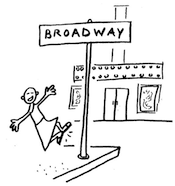
New Yorkers often say that they live here for the culture, so it shouldn’t be a surprise to residents that New York is a thriving and vital center for Buddhist activity in this country.
Jeff Wilson, a former assistant editor at Tricycle, has written the authoritative Buddhist Guide to New York. The book includes a basic guide to Buddhism, an annotated list of practice centers, and a roundup of miscellaneous resources, from Tibetan restaurants to museums to Buddhist shrinks.
Wilson also presents a section called “General Etiquette when visiting Buddhist Centers,” in which he offers advice that one hopes does not reflect the actual behavior of New Yorkers. He suggests that visitors refrain from wearing, “flashy colors” and cursing, and urges people not to touch the bald heads of monastics (or run around smacking the teachers”), and he begs people not to use cell phones or beepers during silent meditation.
Here Jeff talks to Tricycle about the genesis of the book.
T: What led you to this project?
JW: Well, actually I was inspired to do this during my time at Tricycle. So much of my job consisted of tracking down answers, looking for art, and looking for resources. I didn’t always want to rely on books, so I found myself calling people. We’re in New York City, I thought—let’s draw on these people as a resource.
I started keeping a file on teachers, resources, and art banks, and I began to notice that there was a lot of stuff in there. I wished that someone other than me could know about these resources. If only they knew what might be around the corner—anything from a free Buddhist lending library, to a monk from Korea hanging around upstairs from a yoga center, to little Buddhist-run restaurants—all sorts of funky stuff I wanted to share that. That’s what got the idea growing in my head.

What do you think is unique about Buddhism in New York?
What’s amazing is the concentration. We’ve got so many Buddhist groups and traditions in such a small location, the five boroughs. Almost any tradition you could hope for, whatever you’re drawn to, you can find and just go and learn and practice.
So many of us go to Asia, looking for a real Buddhist experience…
Interestingly, there are some things you can’t do in more thoroughly Buddhist places, like Thailand. You can find a great deal of Buddhism there, but it will be mostly of just a few kinds. Here we have great diversity, and it’s not just traditions, it’s also the sangha: there are white people and black people, but also Hispanics, Asians, and people from all different backgrounds, Jews, Catholics, Unitarians—a lot of mix. This is incredibly fertile ground. There’s a real opportunity to be a part of a community and help it grow.
Tabletop Tibet
Whispered Prayers
Portraits and Prose of Tibetans in Exile Stephen R. Harrison
Talisman Press: Santa Barbara, 2000
168 pp.; $59.95 (hardcover)
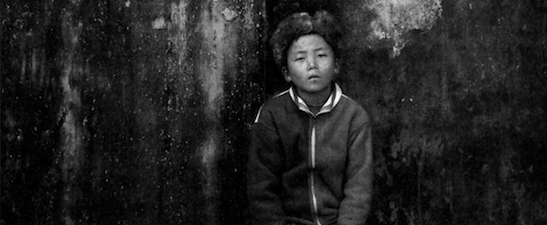
This intimate portrait of the Tibetan community-in-exile presents stark, black-and-white photography accompanied by short personal testimonials from Tibetans living in India.
Whispered Prayers introduces such memorable characters as Magic Momo, an elderly lady with failing eyesight, who places “tape over my eyes…to keep the skin from falling down over them.” The Dalai Lama’s personal physician, long imprisoned by the Chinese, describes using Mao’s “Little Red Book” as a means to recite prayers clandestinely. While the personal stories have common elements, such as incarceration, the pain of fleeing Tibet, and the alienation from family left behind, each one gives a unique human face to the suffering of Tibetan exiles.
The Tibetans
Photographs
Art Perry Viking Studio:
New York, 2000
153 pp.; $35.00
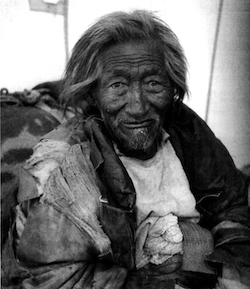
From the Potala Palace in Lhasa to the isolated highland, The Tibetans gives a panoramic view of Tibet. The beautiful black-and-white photographs presented include landscapes and portraits of monks and laity. Most intriguing are the shots of highland nomads and of the author’s account of his visit to the steppe, during which he visits a traditional onpo, or shaman, for his migraines, and pays for the consultation with a bottle of rum. The Tibetans documents everyday Tibetans carrying on resiliently under adverse circumstances and includes a foreword by prominent Tibetan scholar Robert Thurman.
Tibet Since 1950
Elliot Sperling, Orville Schell and Steve Marshall
Aperture/Human Rights Watch:
New York, 2000
183 pp.; $40.00 (hardcover)

The terror of oppression in Tibet is graphically and sometime gruesomely brought to life in this book. Disturbing photographic documentation of the takeover and attempted assimilation of Tibet, and shots of the widespread rioting in Lhasa during the late 1980s, bring the suffering of Tibet under Chinese control into sharp focus. Testimonials from exiles and excerpts from state-sanctioned Chinese newspapers complete the Orwellian portrait of a paranoid and heavy-handed regime.
Astrology: An introduction to the little-known art of Tibetan astro-science
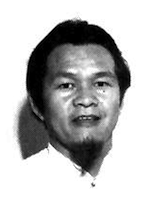
Tibetan Astro-Science
Jhampa Kalsang
Tibet Domani: Rome, 2000
150 pp.; $100.00 (hardcover)
with Astro-wheel and Astro-cards
available at www.tibetdomani.com
Are you an Earth Pig? If you were born in 1959 you are. But don’t worry, it’s not such a bad thing. Although you might have frequent confrontations with enemies, you will enjoy good financial circumstances and a “smooth easy lifestyle.”
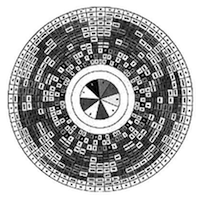
This volume, by Jhampa Kalsang, who holds the equivalent of the Western doctorate in the field, is a comprehensive introduction to Tibetan “astro-science”—so-named, as Robert Thurman explains in the foreword, because it “encompasses astronomy and mathematics along with the astrological arts of divination and prognostication.” The author explains: “Astro-scicnce is as intrinsic to our culture as is our language: it grows from and shapes practices as diverse as agriculture and healthcare, and is transmitted through uniquely Tibetan forms such as folktales and religious ceremonies.”
The book provides historical and philosophical background to Tibetan astro-science and includes charts and graphics, allowing the reader to determine his or her own horoscope.
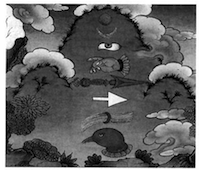
Horoscopes can then be interpreted according to the scriptural teachings, all vividly illustrated. As a bonus, the book comes with a “Tibetan Astro-Wheel,” which simplifies the charting of a horoscope for beginners.
Thank you for subscribing to Tricycle! As a nonprofit, we depend on readers like you to keep Buddhist teachings and practices widely available.